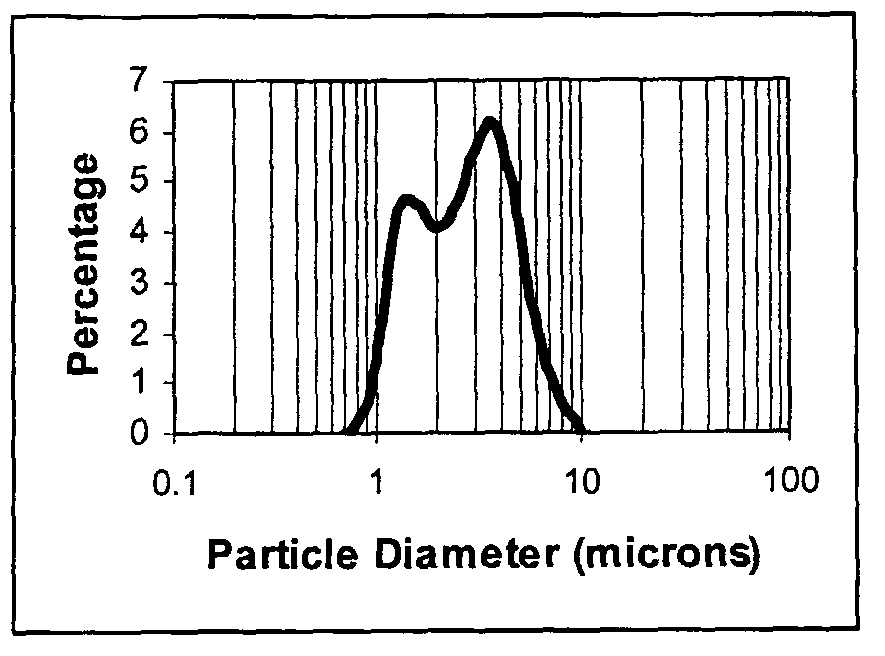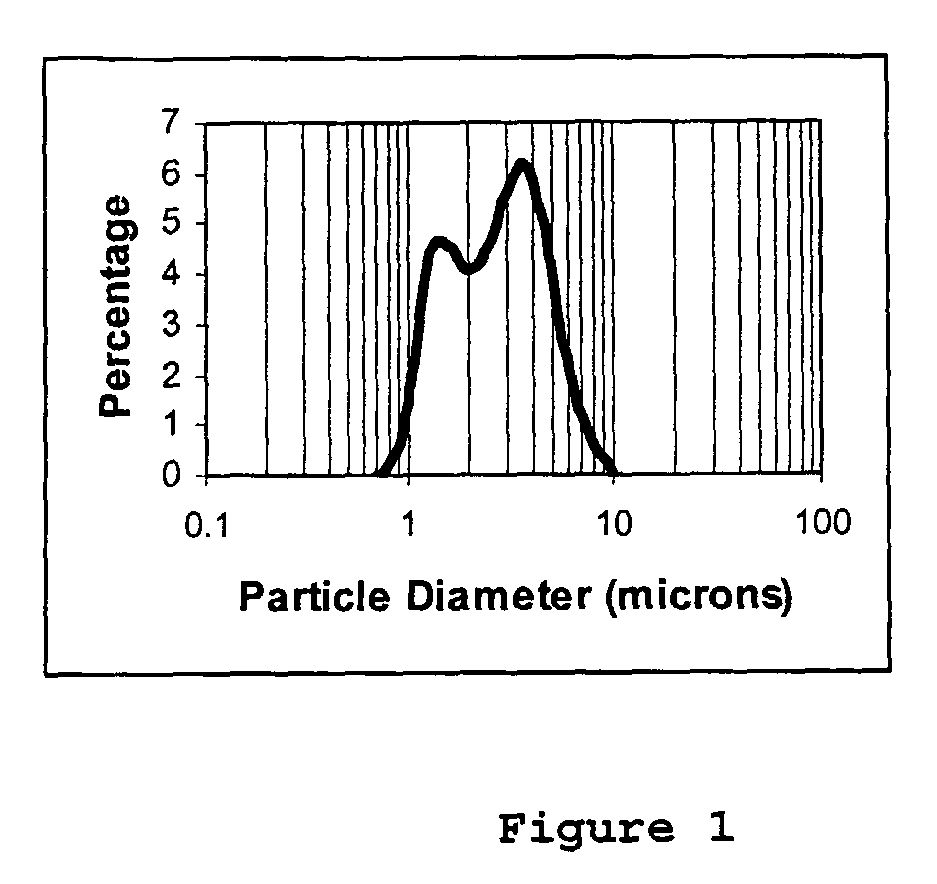Composite oxides or hydroxides comprising alumina and zirconia for automotive catalyst applications and method of manufacturing
a technology of composite materials and zirconia, which is applied in the direction of catalyst activation/preparation, metal/metal-oxide/metal-hydroxide catalysts, physical/chemical process catalysts, etc., can solve the problems of sulphate anion and chloride anion levels in composite materials that are too high for automotive catalyst applications, and the approach to making such composite materials is not novel
- Summary
- Abstract
- Description
- Claims
- Application Information
AI Technical Summary
Benefits of technology
Problems solved by technology
Method used
Image
Examples
example 1
Preparation of the Wet Cake
[0092]The following is an example demonstrating the method of preparing a hydroxide precipitate with an ultimate oxide composition of 4.3 wt % CeO2, 45.4 wt % ZrO2, and 50.3 wt % Al2O3. An aqueous solution of metal salts was prepared by first dissolving 26.7 lbs (12.1 kg) of aluminum nitrate nonahydrate crystals into 68.3 lbs (31.0 kg) of de-ionized water in a 100 gallon (455 liter) intensive mixing tank equipped with an agitator rotating at high speed, mixing for 30 minutes, adding to this mixture 1.4 lbs (0.64 kg) of cerium(III) nitrate stock aqueous solution (26.7 wt % on a CeO2 basis) and 16.3 lbs (7.4 kg) of zirconyl nitrate stock aqueous solution (20.1 wt % on a ZrO2 basis), mixing for another 15 minutes, then reserving the solution in a separate vessel. The intensive mixing tank was then rinsed out with de-ionized water.
[0093]A dilute caustic solution was prepared by adding 68.3 lbs (31.0 kg) of de-ionized water to the intensive mixing tank and adju...
example 2
[0096]A 500 gram portion of the washed wet cake prepared in EXAMPLE 1 was dried at 100° C. / 18 hrs, calcined at 700° / 4 hrs, then aged at 1100° C. / 2 hrs. The aged surface area was determined to be 29.7 m2 / g.
example 3
[0097]A 500 gram portion of the washed wet cake prepared in EXAMPLE 1 was re-slurried with 3 L of de-ionized water in a 5 L glass beaker using a laboratory-scale high-speed agitator and the pH adjusted 8.0 using caustic. The slurry was then put into a laboratory-scale pressure vessel fitted with a stirrer and hydrothermally treated at 120° C. for 6 hrs. After appropriate post-hydrothermal treatments (filtering, washing, etc. as needed), the portion was then dried at 100° C. / 18 hrs, calcined at 700° C. / 4 hrs, then aged at 1100° C. / 2 hrs. The aged surface area was determined to be 38.1 m2 / g.
PUM
| Property | Measurement | Unit |
|---|---|---|
| temperature | aaaaa | aaaaa |
| temperature | aaaaa | aaaaa |
| temperatures | aaaaa | aaaaa |
Abstract
Description
Claims
Application Information
 Login to View More
Login to View More - R&D
- Intellectual Property
- Life Sciences
- Materials
- Tech Scout
- Unparalleled Data Quality
- Higher Quality Content
- 60% Fewer Hallucinations
Browse by: Latest US Patents, China's latest patents, Technical Efficacy Thesaurus, Application Domain, Technology Topic, Popular Technical Reports.
© 2025 PatSnap. All rights reserved.Legal|Privacy policy|Modern Slavery Act Transparency Statement|Sitemap|About US| Contact US: help@patsnap.com


